Dive Destinations
Liveaboards
Resorts / Day Trips
Scuba Training
...Highlights: dolphins, non diving activities...
...Diving environment: wreck diving, beginner and advanced divers, very popular...
Hurghada is located on the Egyptian mainland at the mouth of the Gulf of Suez, some 65 km southwest of the southern tip of the Sinai Peninsula, and Sharm El Sheikh just a few kilometres further. Such a position makes Hurghada an ideal base for scuba diving in the Red Sea since it is the main gateway for liveaboard trips to both the northern and southern sections of Egypt's Red Sea.
The local dive sites can be quite interesting, with many coral reef sites dotted around Giftun Island. There is an interesting cave passage to explore at Umm Gamar but heading into the northern region is where the best action really is. In the Shadwan and Gubal islands region there are several fantastic wreck dives, including the Abu Nuhas wrecks, the Rosalie Moller, the Kingston, Ulysses and Gubal Barge. These wrecks offer so much variety in terms of history, type, age and depth that you'll need several days of diving to experience all that Hurghada has to offer. There is even a house reef where dolphin encounters are highly likely.
What's more, Hurghada is often the departure point for liveaboard safaris to the Southern Red Sea of Egypt. Dive sites such as the Brothers, Daedalus and Elphinstone are frequently on the lips of experienced divers who visit the Red Sea, and each of these can be reached on liveaboards out of Hurghada.
With its days as a backwater village long since gone, the town is now a thriving Red Sea beach holiday destination. It offers all the usual attractions of a popular tourist area, all at competitive prices. So if you choose to base yourself here for some local day trip diving, or as a launch point to discover fantastic wreck and reef adventures further afield, few divers will leave here with a sense of disappointment.
This reef system in northern Hurghada has 4 shipwrecks that are suitable for diving. Each of the wrecks has its own individual character and offers something unique. Therefore to dive all 4 of the wrecks together will be a complete and thoroughly rewarding scuba experience.
> [More details: The Abu Nuhas Wrecks]This is a popular spot not far north from Hurghada for liveaboards (1 hour) and daytrips (2 hours) when the conditions permit. This isolated mid-sea reef, is found between Sha'ab Umm Qamar and Giftun Island and weather conditions often make the exposed site difficult or impossible to dive.
Carless Reef consists of a plateau pushing up from the Abyss and featuring 2 large pinnacles. The surface conditions and current can present a challenge, but the proliferation of life in the swirling, nutrient-rich water can make diving here one of the Red Sea's most exciting experiences. It is difficult to imagine how this site was declared practically dead after a vicious crown of thorns starfish attack in the late 1990s. Now it bursts with life.
The 2 pinnacles rise from the reef plateau at around 18m and top out in smaller plateaus of around 5m depth. The pinnacle walls are bedecked in hard and soft corals and have thousands of small colourful fish, predominantly orange fairy basslets flitting around. The plateau varies in depth between around 15 and 18 metres before a drop-off into the abyss on its north eastern edge. You can investigate the plateau which features many little bommies, brain corals, and acropora corals. There is also a large population of inquisitive moray eels described as "semi tame" which often leave their refuges and swim freely around the divers.
Large gorgonian fans reach out into the blue from the steep walls of the drop-off. When the current is in full flow, big fish action is the name of the game. White tip reef sharks, jacks, tuna and barracuda are quite commonly seen. A pod of dolphins could come into view if luck is on your side. Whispered accounts of sailfish and a "resident" tiger shark also stir your imagination as you scan the blue.
Few dive sites in the Red Sea offer as much as Carless Reef: healthy corals, reefs bursting with colour and possible pelagic sightings in the blue that can live long in the memory.
This is not an outstanding reef. It is quite a shallow submerged reef system and offers little to excite scuba divers in terms of coral life. However, this is not the reason that boats flock to this site. Shaab El Erg is Hurghada's dolphin house reef and liveaboards often visit this site, both as a check out dive and as a shallow final dive at the end of a cruise.
Dolphin encounters are very common here, whether its just snorkelling with them during a surface interval or actually interacting with them underwater during a dive, which seems just as likely. If you've never dived or even swam with dolphins before then this site is likely to be a lasting memory from your Hurghada diving holiday.
This Red Sea dive site features the wreck of an Egyptian minesweeper ship which sank just outside the harbour in Hurghada. It is named after its location, El Mina meaning "the harbour" in Arabic. It was a 58m long ship which was attacked by Israeli phantom jets (during the war between Egypt and Israel) and sunk while at anchor. The date of the sinking is a matter of some debate but seems to have been in 1967 or 1973. Nowadays, it is a perfect site for a wreck dive.
There is a mooring line, down which divers descend to the stern of the boat at a depth of approximately 18-20m. The ship lies on its port side and your dive may start by inspecting the propellers which, as with the rest of this young wreck, are in very good condition. Although there is not a huge amount of marine life on this site, it is of interest particularly to wreck aficionados.
Visibility is normally good at this site, allowing you to have a clear look at almost half of the entire wreck from the stern. Watch out for a few pufferfish hanging around the stern area, as if patrolling the divers' descent. After spending few minutes around the stern, you can begin moving around the wreck keeping it on your right shoulder, descending to a depth between 25-30m (considering the no-deco limits).
The contra air guns are clearly visible, as are many bullets now encrusted in corals. There is also a big anchor chain lying at the sea bottom. Moving forward towards the bow, it is possible to see a torpedo that has fallen off the boat. Once at the bow on the starboard side, you can clearly see the blow that took the ship down, and it is worth looking inside with a torch.
As the minutes at depth pass by, it will soon be time to ascend over the bow by swimming towards the rear of the boat again. Coral growth has started forming over the superstructure of the boat and there is good chance to see several pipefish crawling around as well as ghostpipefish. Cleaner shrimp can be spotted in various nooks and crannies and large numbers of glassfish also lurk in the calmer crevices.
This is a site frequently dived by the northern Red Sea liveaboards since it is suitable for all levels of scuba diver. It sits in around 15m of water and is located in a sheltered spot where boats commonly tie up for the night. As a result there is a strong chance you will experience it as a night dive.
While the Red Sea, and in particular the Hurghada region, is famed in the diving industry for its large wrecks, this one is small at under 35m in length. Some wrecks here are wonderfully intact and feature several decks yet the Gubal Barge is little more than a decaying hull. However, it is popular more because of the marine life than any unique features of the wreck. It has been suggested that it is the popularity of the location as a mooring site, and the titbits thrown overboard that is chiefly responsible for the proliferation of fish.
The surrounding reef is as worthy of inspection as the wreck itself, and if there are too many divers around it is worth enjoying the relative peace of the reef where you can spot dorid nudibranchs, and perhaps even the magnificent Spanish Dancer. Lionfish lurk in wait for some passing prey, while various shrimps, including boxer shrimps, and anemone crabs seem to appear in every crevice.
Encrusting sponges and soft corals are all over the withering remains of the barge, as are well-disguised scorpionfish, some enormous resident giant moray eels and the occasional crocodilefish. You may also spot octopus both in the fissures of the wreck and on the surrounding reef, while a swirling silvery fishball dances this way and that in the water column above you.
While some night dive sites can be "hit and miss", the Gubal Barge always delivers.
Shag Rock is just 15 minutes motoring time south west of the Thistlegorm and is part of the Red Sea reef system known as Sha'ab Ali. It gets its name from the cormorants that sometimes perch on the reef's light beacon, and not after some lover's secret rendez vous point, as some may like to think.
On the northern slopes of Shag Rock lies a wreck, the Kingston, which sank here on 22 February 1881. This was an 78m long twin mast steamship that ran aground and gradually sank to a maximum depth of 15m at the stern. The ship's hull and main deck frame are fairly intact and the Kingston lies upright in a north-south aspect, perpendicular to the reef, the bow furthest up the gentle reef slope.
Due to its location near the entrance to the Straits of Gubal, currents can be strong here, so its best to drop in to the north and use the current to drift dive onto the wreck. Penetration is simple in the shallow and open inner hull. Take your time to explore here as the hull also offers protection from the prevailing currents; however surge can sometimes be present so do take care. The frame structure is overgrown with stubbly hard corals and the hull is home to Arabian angelfish, surgeonfish and groupers, with many anthias and damsels flitting around.
As you progress through the dive, you can entertain yourself by exploring all the various swimthroughs under and along the deck. You can inspect the spare propeller which sits midway along the deck, slightly more towards the stern of the 2 large cylindrical boilers. While your nose may be stuck in some of the crevices of the wreck, be sure not to miss the larger fish that are present in this area such as schools of yellow snapper, plus the occasional sweetlips and Napoleon wrasse.
When you're done with wreck exploration, just join up with the reef slope and drift with the current to the south. The reef is quite stunning with its densely packed coral fields and neat layers of Acropora table corals to the south east. Yellowtail goatfish and bluelined snappers form big schools here.
The Kingston also lies in a part of the Red Sea where dolphin sightings are reasonably common. While you have a strong chance of seeing them from the surface, to encounter them on a dive, while not unheard of, requires luck to be on your side.
This wreck lies in 50m of water so it is for advanced divers only. It is a large ship in good condition and attracts huge congregations of schooling fish. It is one deep and interesting exploration and certainly worth the trouble to divers with a sense of adventure.
The Rosalie Moller is another Red Sea legacy of World War II. This 110m coal ship was bombed in 1940 by German aircraft and sank into 50m of water, just off Gubal Island in the northern Hurghada area. It is an excellent deep dive and requires advanced certification since you'll descend down the buoy line onto the companionway and the main deck at 32m. For this reason, it will take you several dives at this wreck to orientate yourself due to the necessarily short bottom times.
If you decide to explore the stern area then you'll make your way over the collapsed funnel, past the engineers accommodation and engine room, the bomb blast hole on the port side, the galley and life boat deck, finally to descend down to the immense propeller and rudder. This is the deepest portion of the wreck as the seabed upon which the ship rests slopes gently from bow to stern. The main deck at the stern is 36m deep.
To explore the bow of the ship you'll swim past the bridge, passenger saloon, to the winch area. Take a diving torch and look inside the rooms. They are packed full of cardinalfish and the deck is crawling with juvenile fusiliers, yellowtail barracuda and glassfish. Of course, such an immense mass of juvenile fish attracts some of the hunters you can find when scuba diving in Hurghada such as trevally and tuna. Over the bow lurk several meaty groupers, close to the anchor chain.
It is possible to penetrate the wreck through the large cargo hold entrances on the main deck. The holds have 2 levels. However, there is very little to be seen of interest that can't be seen from the outside; just some bags of coal. And the lower level is very silty and this can be very hazardous at such depths.
To end this adventurous dive you can either make your way back to the buoy line amidships or climb the crow's nest to 22m and then swim southeasterly 20-30m or so to pick up the ascent line.
One of the 2 islands that comprise Giftun National Park, Small Giftun is the more frequently featured on liveaboard itineraries and by diving daytrip boats from Hurghada. Where the land dips underwater, the wall drops to great depths of over 100m and there are 2 plateaus which you may visit depending on your dive plan.
There are several ways to dive Small Giftun depending on the current. Drift along spectacular drop-offs and coral-covered plateaus, glide by pinnacles, overhangs and caves all with prolific gorgonian fan growth and a dizzying array of Hurghada marine life. Pelagic action is a constant as the waters are nutrient rich and a frequent feeding ground.
The southern end of the island features a shallow wall to a plateau and is a popular spot for night dives. Otherwise you will explore the east side (featuring 2 plateaus) or the west side (featuring only the southern plateau). In either case the dive will feature a drift along a healthy wall which give way to the southern plateau where the current eases giving you time to explore the area in detail.
Jumping in on the east coast of Small Giftun Island during the day time, you will begin what is one of the best drift dives in the area along a beautiful wall of purple soft corals and fan corals. You will drift along, allowing the changing colours and topography of the wall to pass before your eyes. The current brings with it a lot of nutrients and therefore makes it a site rich in underwater life. Keep one eye on the blue as barracudas and trevallies can be seen hunting their small prey. Napoleon wrasse and hawksbill turtles can also be seen, often on your safety stop.
When you come to the southern plateau, you will see that it is bedecked in vibrant hard and soft corals. Where the plateau drops away to the depths you can see gorgonian sea fans at their most magnificent. These sprawling red beauties have a diameter of more than 2m and look out for longnose hawkfish lurking in their protective folds. Healthy acropora corals, brain coral and leaf corals abound all over the plateau. Fast swimming schools of fusiliers may dash past your eyes glinting flashes of silver which contrast amazingly when they meet even bigger schools of blue-striped snappers.
After sunset, the reef comes alive with some of the favourite nocturnal creatures of visitors to the Red Sea. Spanish Dancers, cuttlefish, squid, lobsters, sole and shrimps make this one of the top Hurghada night diving spots.
In the shallows you may see, particularly on the west side of the island, broken and dead coral mixed with the healthy hard corals. This is due to the proximity of Hurghada harbour, meaning the site is much visited by day trip boats. If you have ever witnessed a boat full of Hurghada daytrippers you will not be surprised to hear that these snorkelers and first-time divers tend not to be shallow coral's best friends.
When ending your dive you would be well advised to deploy a surface marker buoy and watch out for the zodiacs and daytrips boats whizzing around picking up their punters.
Built in 1871 in Newcastle, England, this 95m long cargo vessel was sunk after hitting the reef of Gobul Seghir in 1887. It now lies at a maximum depth of a little over 30m, making it the ideal depth for Red Sea wreck divers to explore. Having been submerged for such a long time the Ulysses has been well and truly 'marinated' and is now completely encrusted with hard corals, blending in with the natural substrate of the Red Sea.
You will begin this dive by back-rolling in from a zodiac and dropping down to the wreck which lies at a 30 degree angle with its more intact stern in deeper water and the fragmented bow lying shallower. Normally the dive will begin at the stern where it is possible to penetrate and carefully fin through below the grid-like beams of the main deck. The light may be limited here so it is worth bringing your torch for illuminating the occasional the occasional nudibranch, but especially the ball of glassfish you can often find behind the engine room.
As you make your way shallower you can cover the sandy slope where the mast funnel lies. Look out for ghost pipefish lurking around the small gorgonian here.
Further into the shallows you will find the wrecked remains of the bow where you might find moray eels and the occasional grouper. Here you will rejoin the reef and slowly make your way back to the boat. Look out for crocodilefish and seahorses in the gorgonian fans of this section of the reef. If you are lucky you might hear the unmistakable noises and then witness the unforgettable sight of dolphins, which are quite commonly sighted in this area.
For more information on your diving options, and all the other travel information you might need to visit Hurghada and Egypt, view our Red Sea liveaboard or Hurghada day trips sections.
The Egyptian liveaboards run trips that encompass the whole region, from the local Hurghada dive sites, up through the northern wrecks area, and on to the Sinai Peninsula and the Thistlegorm and Ras Mohammed. This is simply the most convenient and cost effective way to dive the whole northern Red Sea region.
Day trips from Hurghada will also visit the local sites, as well as allow you to dive the Abu Nuhas wrecks that are further afield. However, although day trips will appeal to those that prefer to base themselves on terra firma, it must be understood that daily travel times to the further sites will be 2-3 hours each way.
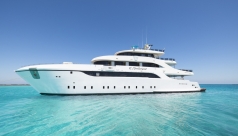
Customer rating: Excellent!
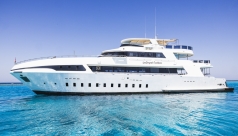
Customer rating: Very good!
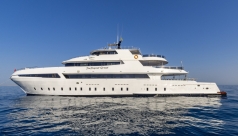
Customer rating: Good

Customer rating: Excellent!

Customer rating: Excellent!

Customer rating: Good

Customer rating: Be first to rate!

Customer rating: Be first to rate!

Customer rating: Be first to rate!

Customer rating: Be first to rate!

Customer rating: Very good!

Customer rating: Good

Customer rating: Be first to rate!

Customer rating: Be first to rate!
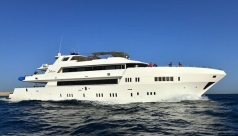
Customer rating: Excellent!

Customer rating: Excellent!

Customer rating: Excellent!
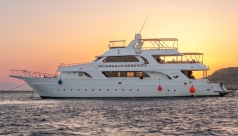
Customer rating: Excellent!

Customer rating: Very good!

Customer rating: Very good!

Customer rating: Very good!

Customer rating: Very good!

Customer rating: Very good!

Customer rating: Good

Customer rating: Be first to rate!

Customer rating: Be first to rate!

Customer rating: Excellent!

Customer rating: Excellent!

Customer rating: Excellent!

Customer rating: Good

Customer rating: Good

Customer rating: Good
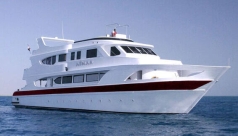
Customer rating: Good
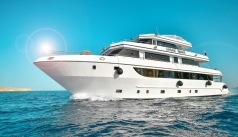
Customer rating: Good
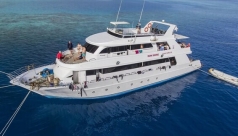
Customer rating: Good
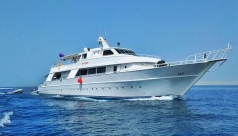
Customer rating: Average

Customer rating: Be first to rate!

Customer rating: Be first to rate!

Customer rating: Be first to rate!

Customer rating: Be first to rate!

Customer rating: Be first to rate!
For the holiday adventure of a lifetime, why not combine your diving trip with a tour to discover the historical sights of Egypt? You can take a River Nile cruise or a Cairo city tour: Egypt antiquity tours.
The northern Red Sea is slightly cooler than the southern section. For diving Hurghada, temperatures peak at 27-28°C during July to September. After these months the temperatures slide slightly down from 27-25°C in October and November. They continue their downward journey from December to February, plummeting from 25-22°C. After the annual lows of February, things start to warm up again to 22-26°C between March and June.
Corresponding air temperatures see summer averages of around 35°C in Hurghada, sometimes inching up into the low 40s. Temperatures in the cooler winter months, such as January, tend to hover around the 20°C mark. For more useful information on Hurghada’s climate, visit the Weather & Climate website.
Many marine creatures are sighted regularly by scuba divers throughout the year around Hurghada without there being any specific optimal period. Such creatures include the dolphins, dugongs, grey reef sharks and white tip reef sharks.
Review our maps below of the Hurghada region and its host country Egypt. Here, you will find information on how to get to Hurghada.
5m - >40m
10m - 30m
Gentle - moderate
Calm but can be choppy in some places
22°C - 28°C
Beginner - advanced
~40
1 - 2 weeks
Flexibility and adapting to our needed changes fast. Clear options on the Dive The World website of different resort possibilities. The fact that everything's included for the most part, as well as transfers, which makes everything much easier. All in all, it was very good and we're very satisfied with our vacation!
